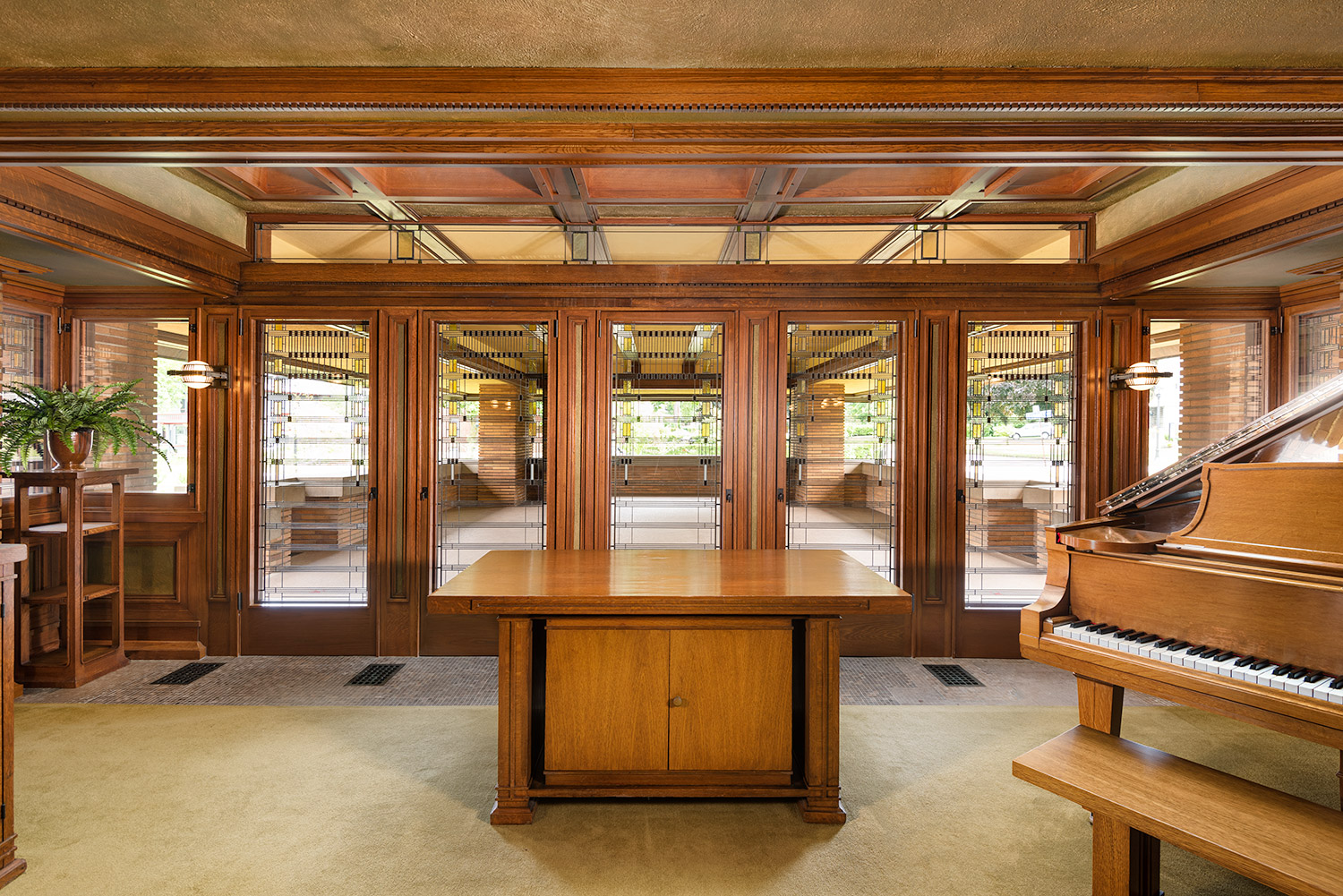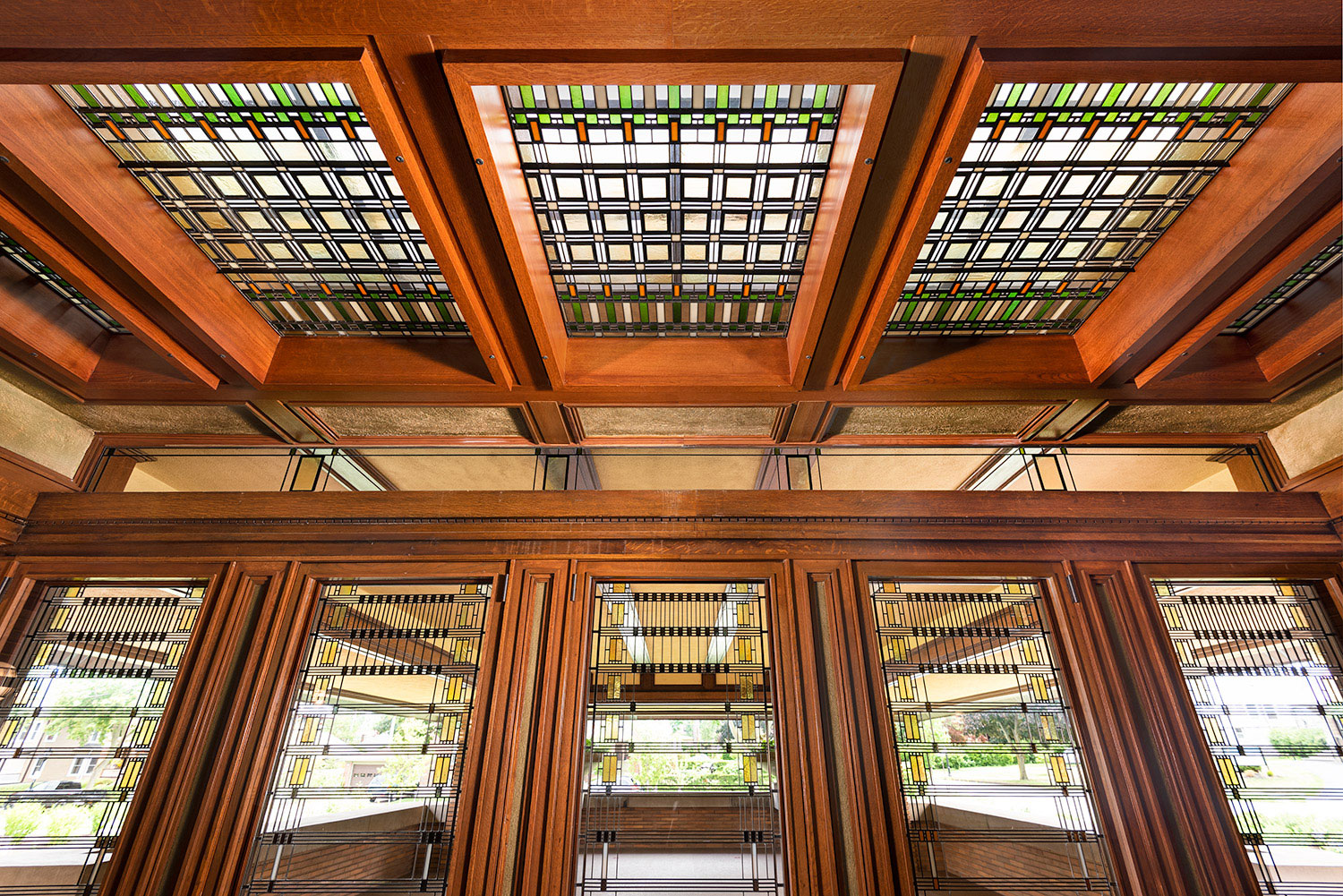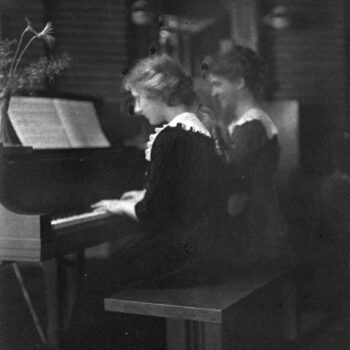“The striving for entity, oneness in diversity, depth in design, repose in the final expression of the whole—all these are there in common pattern between architect and musician” ¹
– Frank Lloyd Wright
Music is a persistent theme in the life and work of Frank Lloyd Wright. In his Autobiography, Wright recalls how as a boy—after he had been put to bed—he would often lie and listen to his father—a music teacher—play Beethoven far into the night. Looking back, he writes:
“To my young mind music spoke a language that stirred me strangely and, as I have since learned, music is the language—beyond all words—of the human heart. The symphony, as my father first taught me, is an edifice of sound. I now felt Architecture not only might be but ought to be symphonic in character.” ²
In that moment, and throughout his career, Wright would frequently use the poetic language of music to describe many of his architectural commissions—from Martin House to Hollyhock House. In fact, when speaking of the Martin House, Wright himself called it “the opus,” the “well-nigh perfect composition,” and “a domestic symphony, true, vital, comfortable.”
Walking through the home, the musicality of the place is undeniable. It is evident in the orchestrated design of Martin House’s harmonious total arrangement. And even more so, it is felt in the architectural rhythms, repeating structural elements, and spatial proportions of the home’s interior spaces—particularly as it is realized in the main living area known as the unit room.
Here, in the living room, the central section of the unit room, one encounters a series of five grand doors leading out onto the verandah—with an equally impressive skylight overhead. Their design is an abstract pattern inspired by the hanging vines of the wisteria. Rectangles of light-reflective gold and iridescent glass cascade like blossoms on a trellis-like grid created by the linear bands of brass metal. To some, the design might even give the impression of musical notes on gridded paper.


With the verandah doors as its backdrop, a piano stands prominently within the living room. As it was with the Wrights, music was also a part of the Martin family. In his diaries, Darwin D. Martin often referred to the many concerts and music festivals that he and his wife Isabelle would attend over the decades. By 1923, he was elected to the first of two terms as a trustee of the Buffalo Symphony Orchestra Association. Not surprisingly, the couple’s love of music was instilled early on in their two children.
Daughter Dorothy took special interest in the piano having received her first lessons at the age of eight. A black-and-white image taken of her by Buffalo photographer Louise F. Mueller serves as a tender portrait of the 15-year old young woman seated at the Steinway grand.
Image courtesy of University at Buffalo Archives
Wright clearly reminds us that there is a similarity of creative vision between music and architecture. But, perhaps it can likewise be surmised that it is through the domestic life of the family that this vision truly comes alive at Wright’s Martin House.

¹ Frank Lloyd Wright, Frank Lloyd Wright: An Autobiography (New York: Barnes & Noble, 1998 ©1943), 422.
² Ibid., 225.








